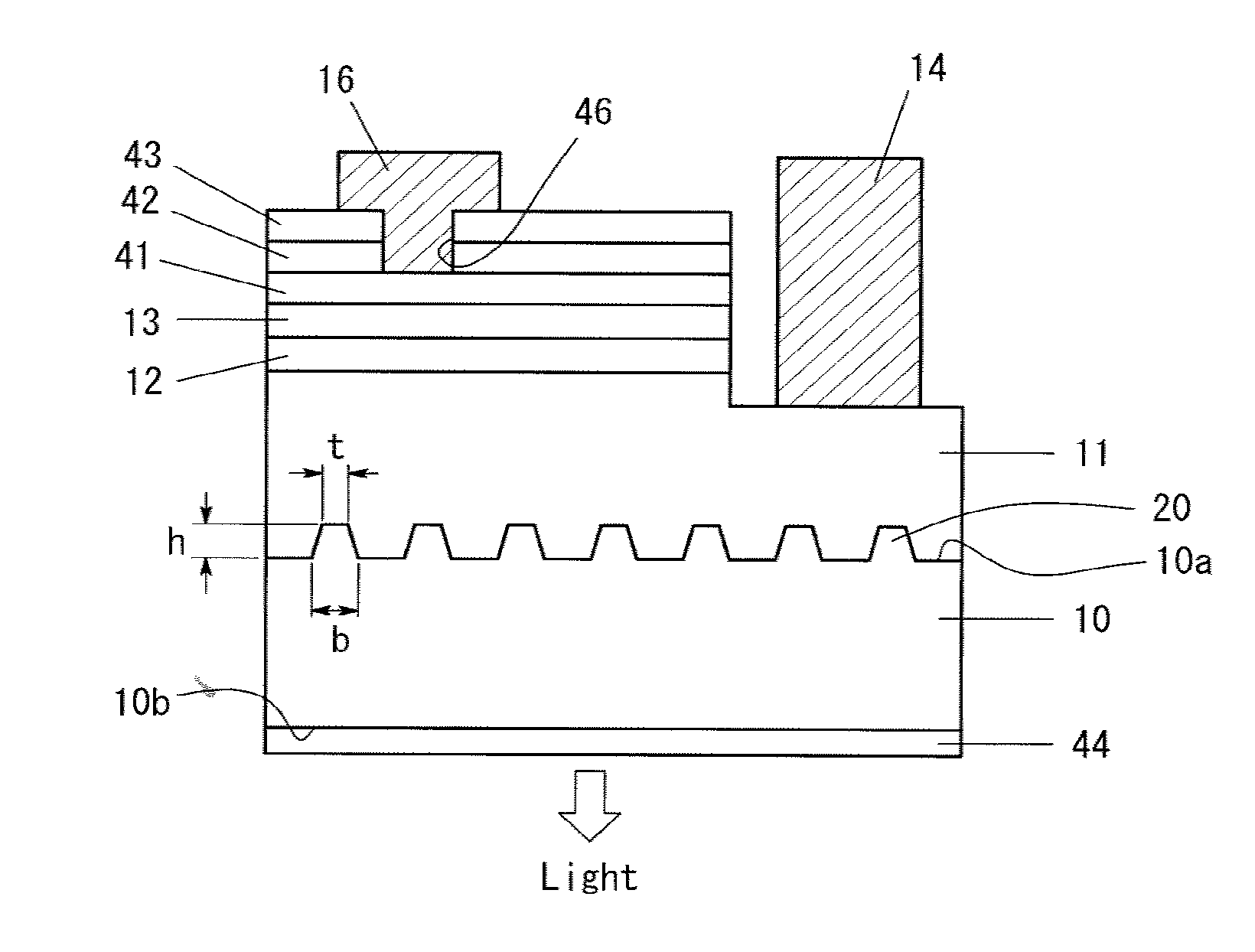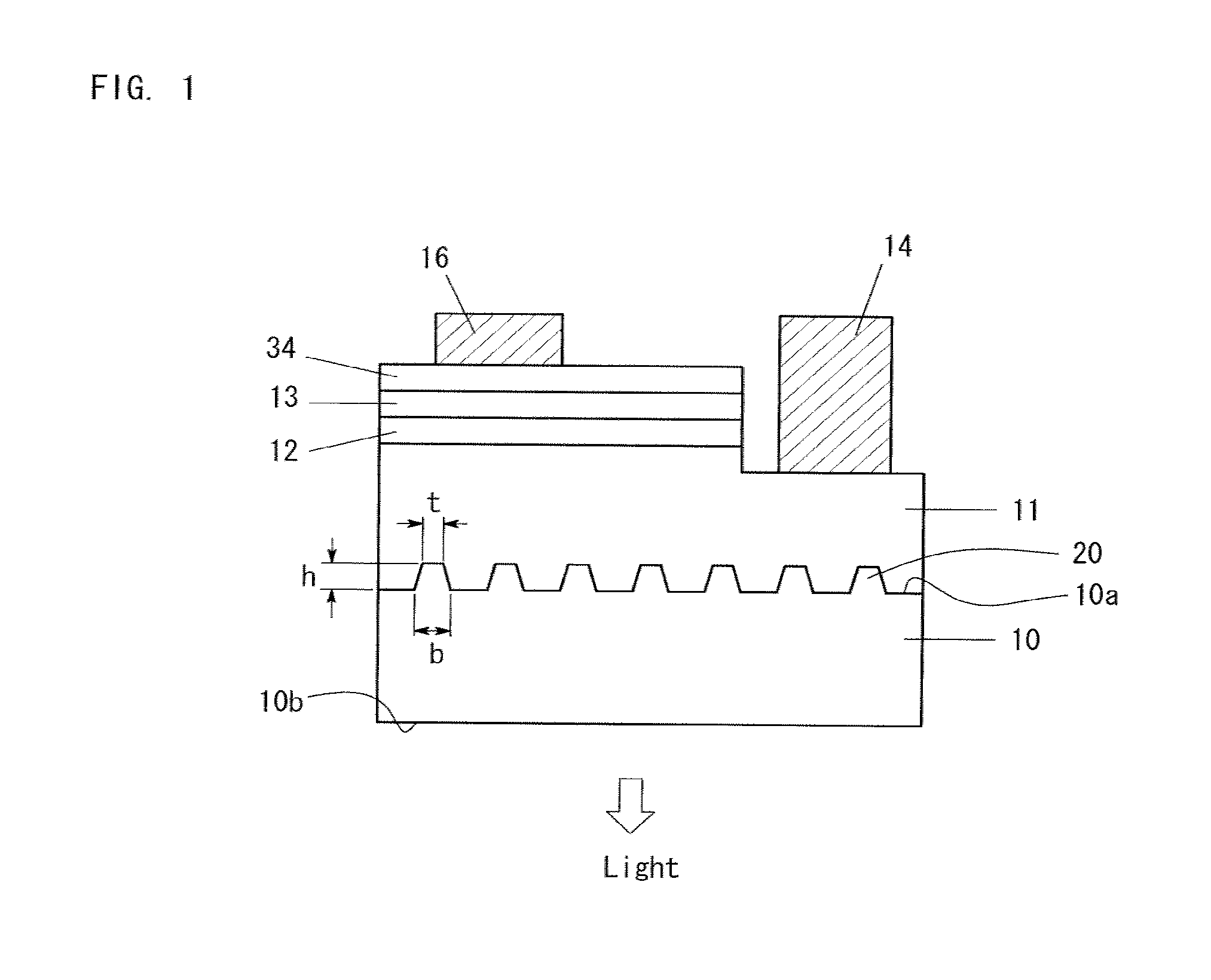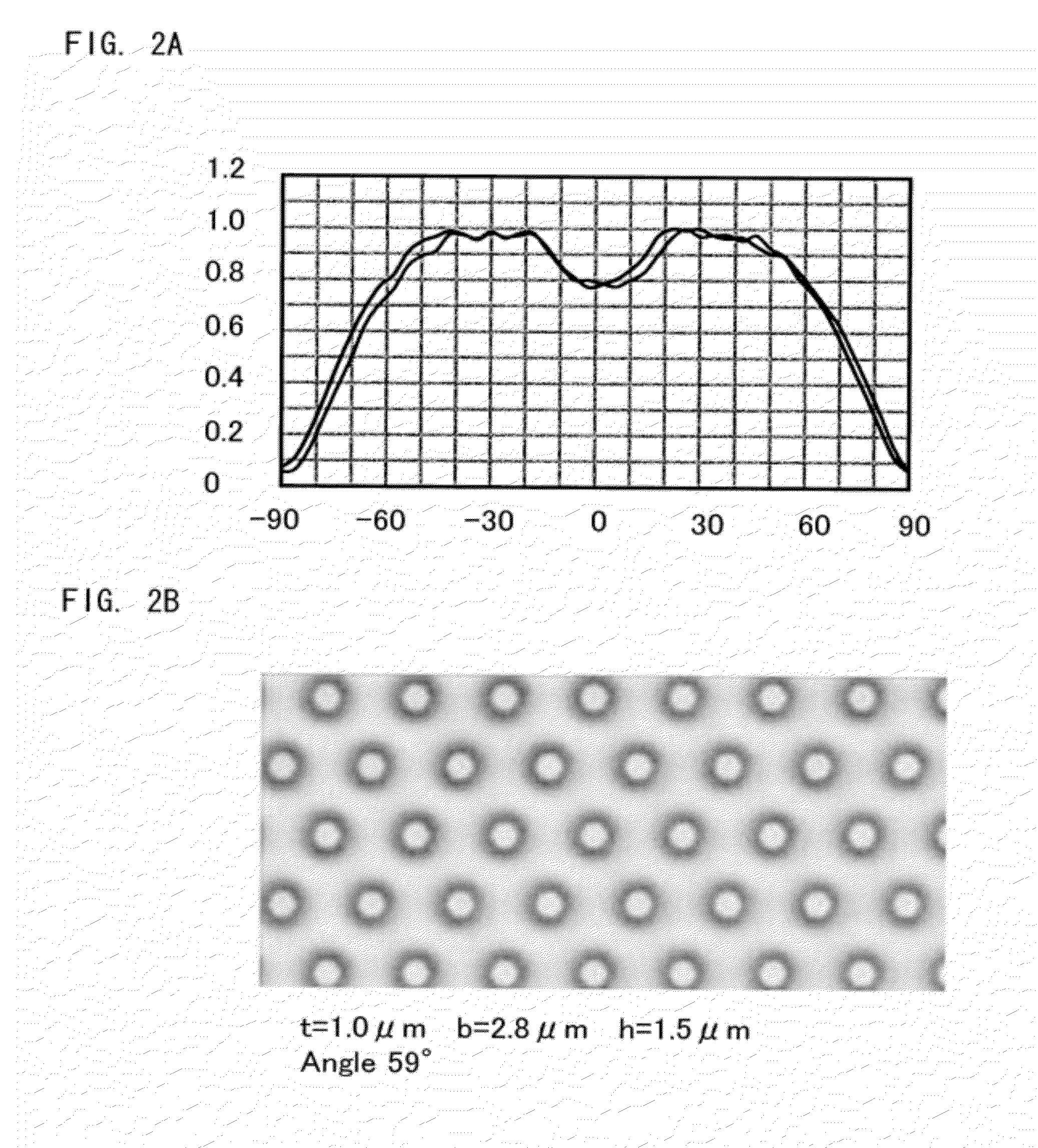Group iii nitride semiconductor light-emitting device
a technology of nitride and semiconductor, applied in the direction of semiconductor devices, basic electric elements, electrical equipment, etc., can solve the problem of no suggestion that light extraction performance is improved, and achieve the effect of increasing the external quantum efficiency of the light-emitting devi
- Summary
- Abstract
- Description
- Claims
- Application Information
AI Technical Summary
Benefits of technology
Problems solved by technology
Method used
Image
Examples
embodiment 1
[0047]FIG. 1 is a cross-sectional view showing the configuration of a Group III nitride semiconductor light-emitting device according to Embodiment 1. The Group III nitride semiconductor light-emitting device according to Embodiment 1 includes a sapphire substrate 10 having a two-dimensional periodic structure of mesas 20 on a surface thereof. And the device includes an n-type layer 11, a light-emitting layer 12, and a p-type layer 13, which are sequentially deposited on the surface of the sapphire substrate 10 and the surface of the two-dimensional periodic structure via a buffer layer (not illustrated), and each of which is formed of a Group III nitride semiconductor. The layered structure of the present invention corresponds to a structure including the n-type layer 11, the light-emitting layer 12, and the p-type layer 13. A portion of the light-emitting layer 12 and a portion of the p-type layer 13 are removed by etching, and the corresponding portion of the surface of the n-typ...
embodiment 2
[0067]FIG. 10 shows the configuration of a light-emitting device according to Embodiment 2 utilizing a light intensity interference pattern. A multilayer transparent film 33 comprising a plurality of layers with a different refractive index was formed on the light output surface 10b of the sapphire substrate 10 in the light-emitting device according to Embodiment 1. The multilayer transparent film 33 is designed to have a thickness of each layer so that more light is transmitted at an angle where the light intensity increases in the light intensity distribution (interference pattern) of the light transmitted through the two-dimensional periodic structure of mesas 20. By this thickness design, the interference pattern of the transmitted light through the multilayer transparent film 33 can be the same as that of the emitted light from the two-dimensional periodic structure of mesas 20. Thus, the light in a direction where the light intensity increases in the light intensity distributi...
embodiment 3
[0068]As shown in FIG. 11, the present embodiment comprises a multilayer reflecting film (DBR) 35 between the reflecting film 34 also serving as an electrode and the p-type layer 13 in the light-emitting device according to Embodiment 1. The multilayer reflecting film 35 also comprises a plurality of dielectric layers with a different refractive index deposited in the same way as the multilayer transparent film 33 of Embodiment 2. The light which is emitted from the light-emitting layer 12 to the multilayer reflecting film 35 is reflected to the light output surface 10b by the multilayer reflecting film 35. The light which is emitted from the light-emitting layer 12 to the periodic structure of mesas 20 is reflected to the multilayer reflecting film 35 by the periodic structure. And the light which incidents to the multilayer reflecting film 35 is reflected to the periodic structure of mesas 20 by the multilayer reflecting film 35. The multilayer reflecting film 35 is designed to ha...
PUM
 Login to View More
Login to View More Abstract
Description
Claims
Application Information
 Login to View More
Login to View More - R&D
- Intellectual Property
- Life Sciences
- Materials
- Tech Scout
- Unparalleled Data Quality
- Higher Quality Content
- 60% Fewer Hallucinations
Browse by: Latest US Patents, China's latest patents, Technical Efficacy Thesaurus, Application Domain, Technology Topic, Popular Technical Reports.
© 2025 PatSnap. All rights reserved.Legal|Privacy policy|Modern Slavery Act Transparency Statement|Sitemap|About US| Contact US: help@patsnap.com



